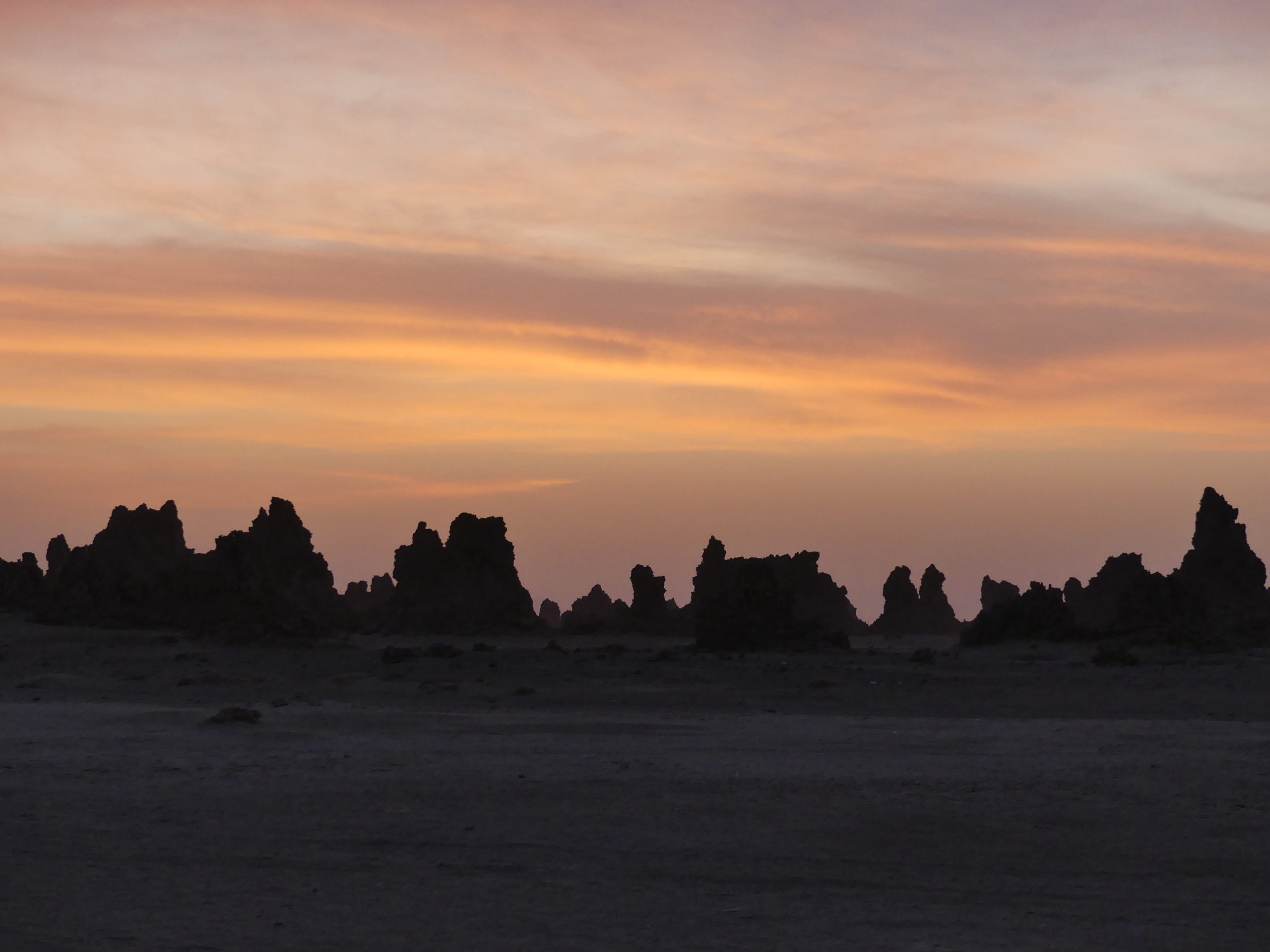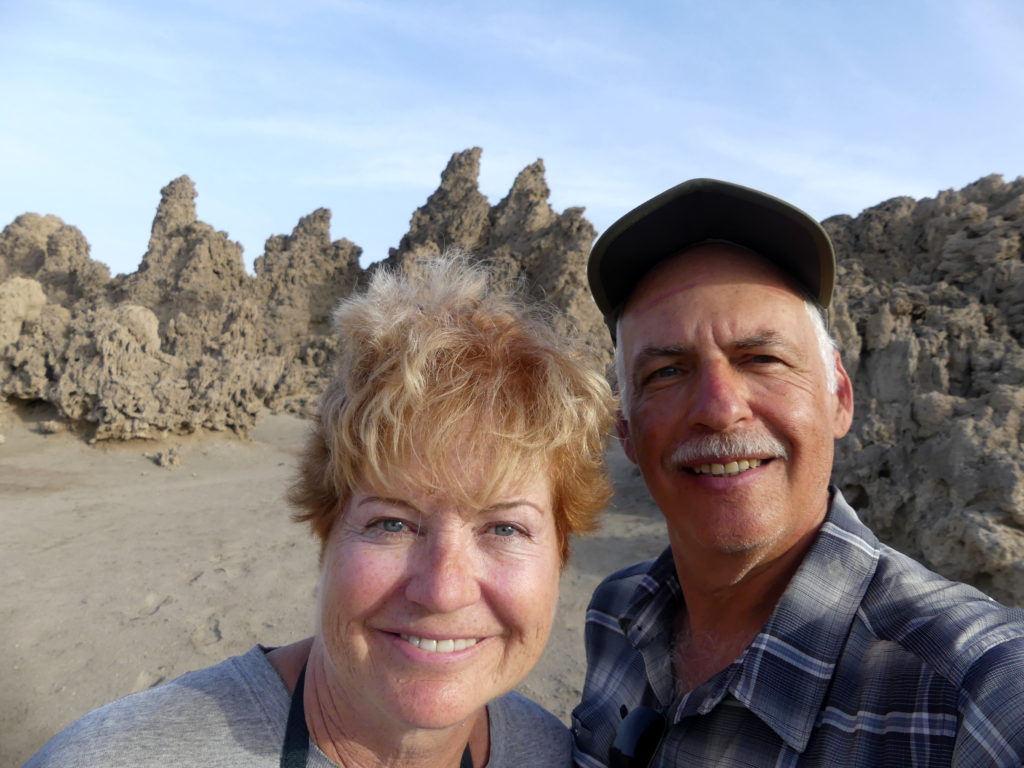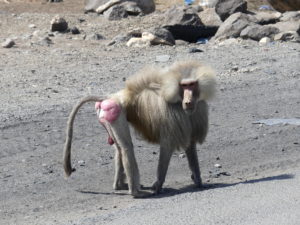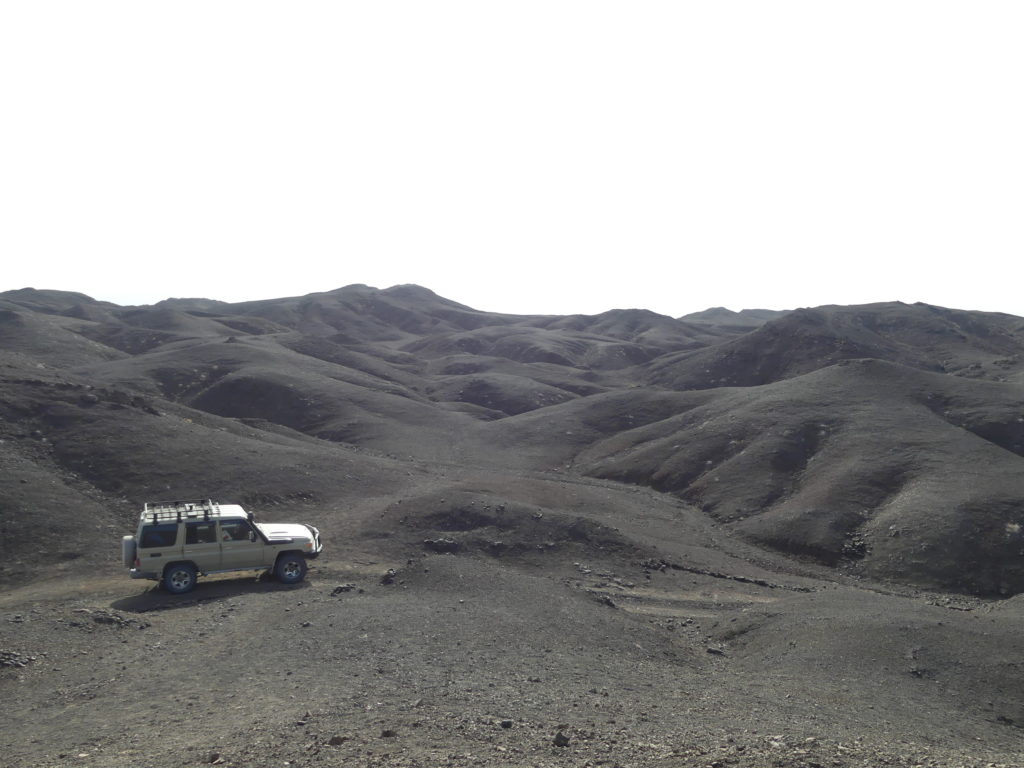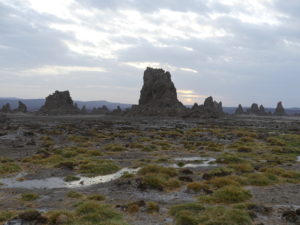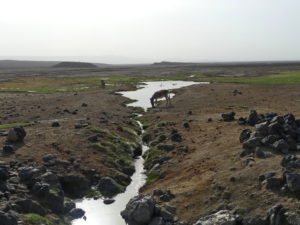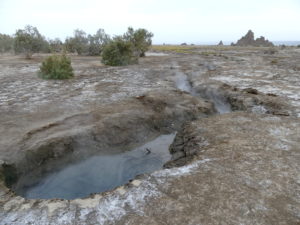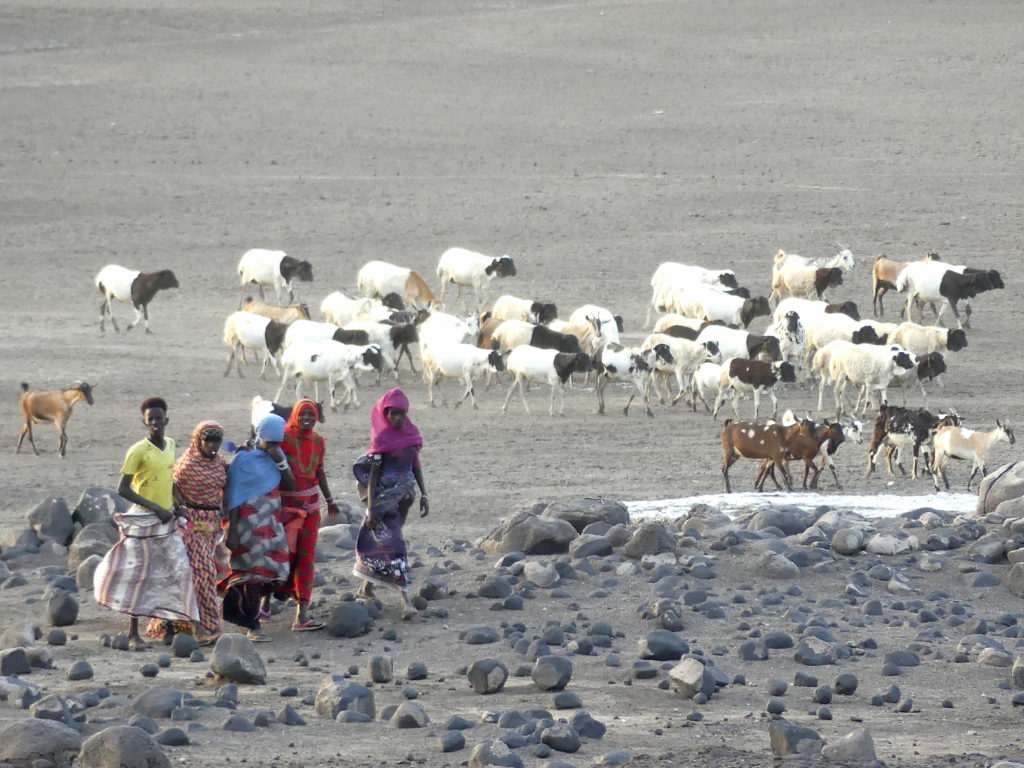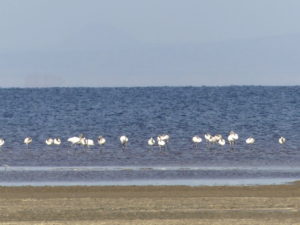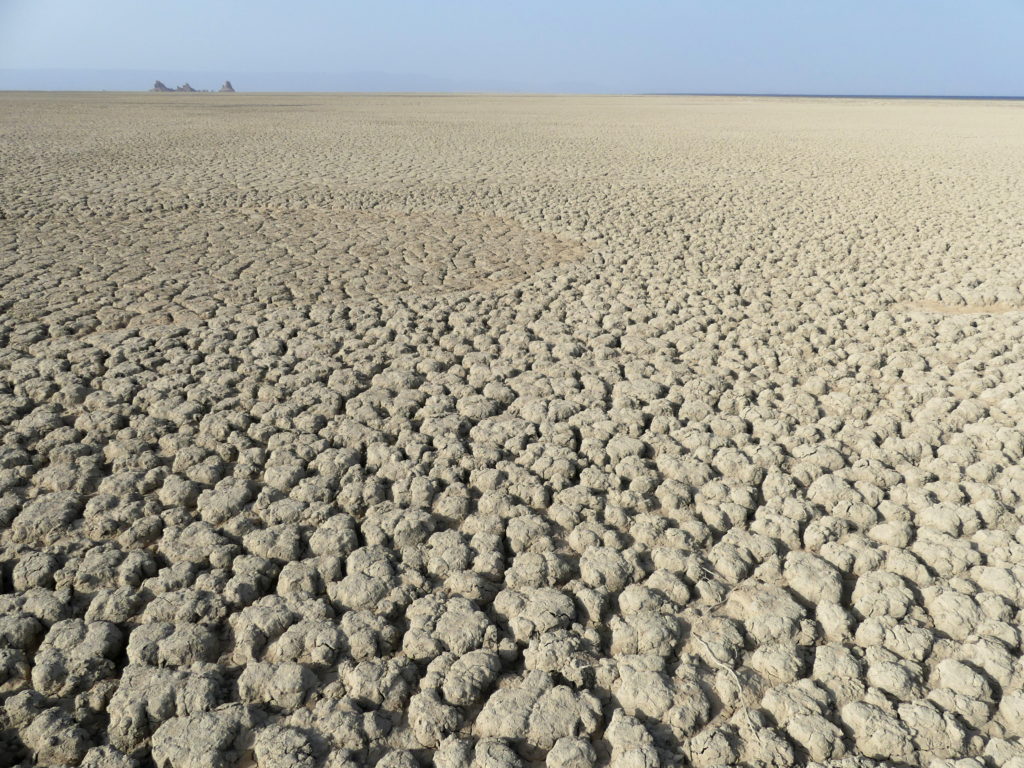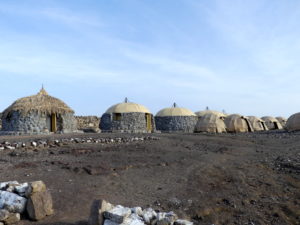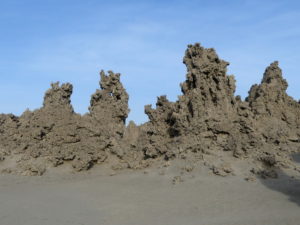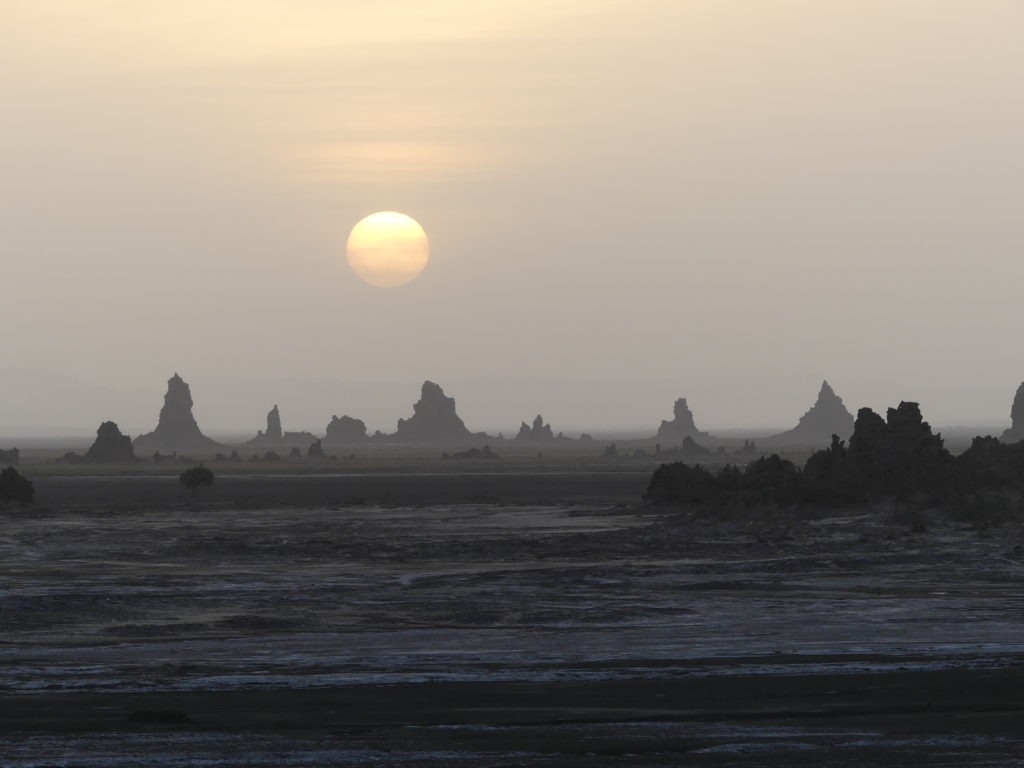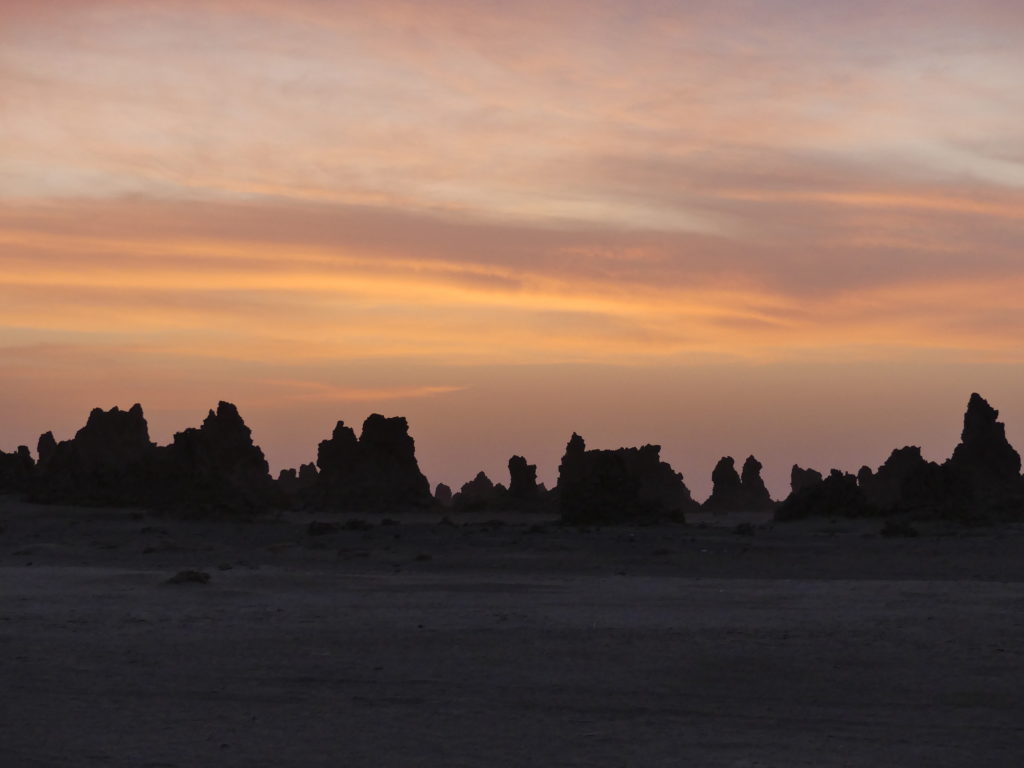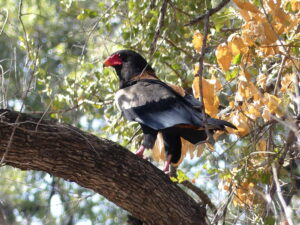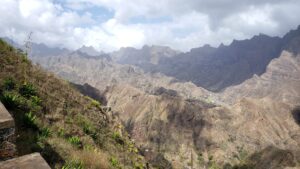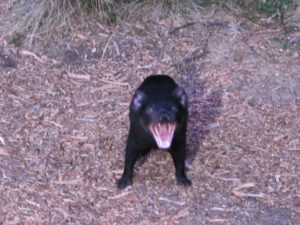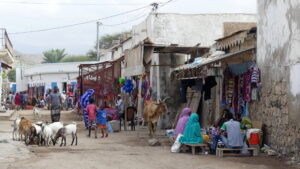After Ethiopia, we shifted to diminutive Djibouti. After visiting the capital for a while (see post), our first trip within the country was Lac Abbe.
We drove through a desert, we thought, of sandy scrubland whose gazelles reminded us of the dry bush country of southern Africa…except for the geremuk, or giraffe gazelle, named evidently for its strangely elongated neck.
Endemic baboons prowled, most having a bad hair day.
The land even turned gray and white, with the grainy remains of lava fields and dry, shallow riverbeds lined by chalky cliffs of calcium carbonate.
Then, up on the other side of a pass through volcanic lava hills, we entered the unique landscape of the Cheminees (or chimneys) at Lac Abbe.
Slightly sulfurous rivers ran heatedly across patches of sand past the impressive cheminees.
Around these small pools, the sulfur content was strong, as befit the underground volcanic character of this area, and little could grow close by.
But, at a greater distance from the streams and pools, the more filtered water was often good enough to still nurture patches of green shrubs. A strange landscape made even stranger.
Quite a distance from the cheminees and the springs is the shore of the lake itself. One must walk about an hour to to Lac Abbe because it has shrunk to a small fraction of its size, while becoming more and more saline. What has happened in recent time is that the feeder waters for the lake have been diverted for agriculture in Ethiopia.
During that hour’s walk, we passed sprawling, shallow pools where shore birds gathered nurtured by the gleaming lake itself and its underground waters. For a few months in the middle of the year, it can rain here quite a bit, but much of the old part of the lake is cracked dry.
Across the wide plains near the lake, grasses, bush and ground cover were abundant, letting local ranchers graze their herds of cattle and goats. One evening, this colorful group accompanied its herd back to the village after grazing them on the greenery sprouting all the way back to Lac Abbe.
When we did our walk, we stopped a few hundred meters short of the lake because the ground turns spongy. But we still could see these Greater Flamingos from afar, decorating the lake with their characteristic pink and white.
We were told that it’s a bit dangerous to walk closer…as reputedly the mud can swallow one up like quicksand.
We were fortunate to be able to stay in the midst of these visual delights.
Our accommodation was a comfortable, but not posh, campsite with both permanent and temporary huts, built in traditional style.
Attractive as the lake is, the most unusual display in this unusual terrain proved to be the lofty Cheminees (or chimneys) with their gnarled and pockmarked surface, erupting from the sandy flatland, countless stalagmites of lava and calcium bubbled up long ago.
They looked like coral from a long lost, withdrawing sea that was at least some 40 meters (40 yards) deep. But they turned out to be calcium carbonate deposits more like those of a limestone cave. Some “active” chimneys still spouted steam and minerals from their tops, adding to their already monumental stature.
These looming islands never ceased to divert us during our two day stay, especially in the glow of sunrise and sunset. It was a wondrous place to be!
(To enlarge any picture above, click on it. Also, for more pictures from Djibouti – along with Eritrea and Ethiopia -, CLICK HERE to view the slideshow at the end of the itinerary page.)


